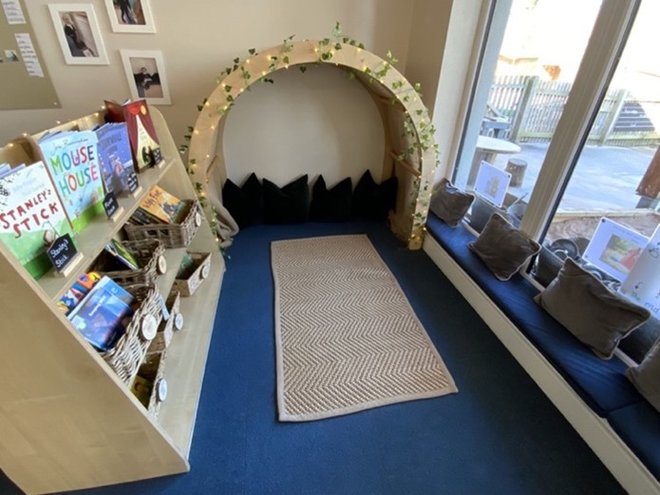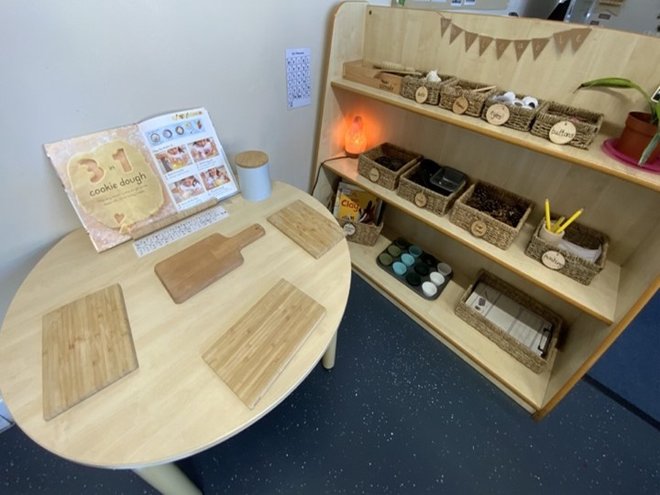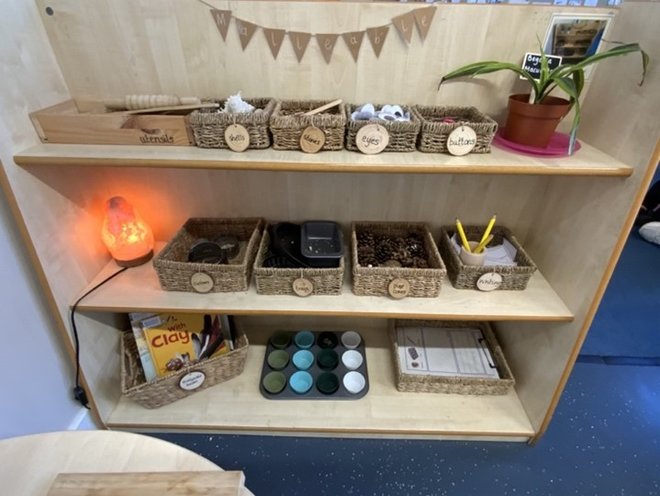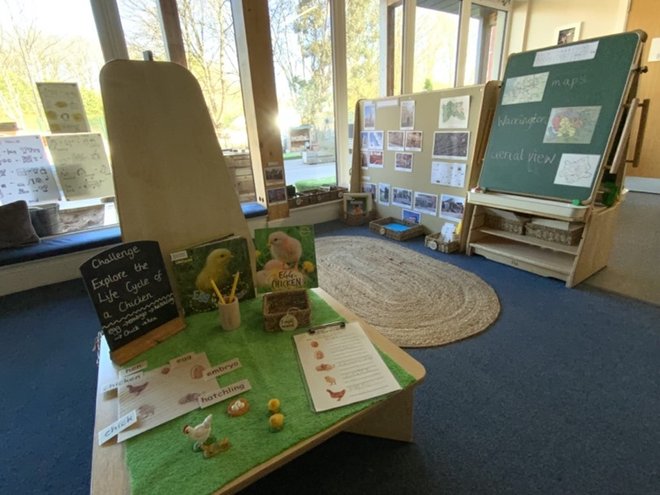
We aim to give food for thought as well as inspiring your creativity and
providing practical ideas you can’t wait to implement in your own settings!
My ECT Journey
As I approach my third year as a class teacher, I am reflecting on my time as an early career teacher and the fundamental strategies I have gained to strengthen my own knowledge and experience in the classroom. Back in September 2021, as a newly qualified teacher I joined the very first two-year ECT programme set out by the Department of Education to provide new teachers with structured training and support through the best available research evidence in education. The provider for my course was Teach First who provided a very robust and thorough teaching platform which enabled me to explore a range of online learning materials and attend face to face seminars where I met others on the same journey.

First Steps
Before I completed my initial teacher training, I worked as a teaching assistant in the Reception class at my current school for 7 years. This outstanding school helped my overall understanding of the Early Years Foundation Stage framework, and my personal confidence in working in a primary school setting. By 2021 I had completed my first-class degree in Early Years Education, and I was very excited to take the next step in my career. During the summer break I met with my team in and outside school during the holidays. I felt it was important to get to know and understand one another on a personal level to ensure we had a strong working relationship when we started in the autumn. I quickly realised that this was very helpful in preparation for my first class.
Considerations for September
✔ Timetable
I wanted to ensure I had structured the day appropriately for the children’s stages of development when starting in Reception. I taught directed teaching sessions in very short bursts of around 10 minutes and ensured sufficient time for independent learning through play as this would help my children to settle in and make solid social relationships with other children and the teachers.
✔ Resources
I organised my classroom appropriately, adhering to my school’s ethos. I selected plain and natural resources with minimal display boards to ensure children were exposed to a calm and comfortable environment that was not overstimulating. My resources were purposeful and pitched correctly for each stage in the year. For example, large felt tips and thick pencils were available for children to mark make in the autumn term and these were gradually replaced by thinner writing tools as the children learned to write in their phonics sessions and strengthened their fine motor skills. I carefully selected my small world resources and thought about the sizes and proportions of each. For example, in my farm animal basket, I made sure horses and cows were larger than ducks and chickens. This helped to avoid any misconceptions children might have about the size of different animals as I knew many of my children would not have seen some of these animals in real life.
✔ Parent/Carer Evening
Prior to starting in the autumn term, I held an information evening to help support new parents/carers. I created a presentation outlining the school ethos, rules and routines, structure of the day, how children would learn through the EYFS framework, lunch routines, uniform, and what parents/carers could do to support their child starting school. I felt this really helped ease any worries parents, carers and children may have had joining us. Parents/carers also had a chance to talk to the staff, ask questions and explore the learning environment.
✔ Parent/Carer One to Ones
I also arranged one to one parent/carer meetings with 10 minutes allocated to each family. I felt it was important for parents/carers to meet me personally to share information. These meetings were very successful and allowed me to build a relationship and become familiar with our families.
✔ Transition Days
I carefully planned my transition days to ensure children had time in the classroom to meet their new friends and teachers. Children visited our setting on two half days, had lunch and became familiar with the environment and school setting.
The importance of good support
Although I had experience working as a teaching assistant in the classroom, I was nervous being given the responsibility to carry out assessments, gather and analyse data on children’s progress. I soon realised there was lots of support available to me. My mentor created a safe space where I could ask anything and strengthen my personal development where needed. From the beginning, I asked questions, made notes, took pictures, and allowed myself time at home to understand areas I was unsure of, and this really helped my development as an ECT.
Phonics and reading
As the year progressed, I discovered my love of teaching phonics and reading. I was amazed at how the systematic, synthetic phonics sessions (Read Write Inc.) I taught each day helped the children to read and write sounds, words, and sentences. I taught a new sound each day to my whole class for the first two weeks and then assessed children’s understanding of these new sounds. This then helped me to split children into four groups according to their appropriate developmental level. Some children retained sounds more quickly therefore sessions were taught at a faster pace to ensure children were challenged. Other children were taught one sound per week where I incorporated games, songs and activities to ensure teaching was adapted to all children’s different learning styles and abilities.
Tips and Tricks:
✔ Rules, Routines and Behaviour – get them right!
I dedicated the first few weeks of the autumn term to teaching children our school rules and routines and the expected behaviour of our school. This was done using visual timetables to ensure children understood the structure of the day. Now and Next Boards were used for children struggling to transition from one activity to another. I also used visual cards displaying pictures showing good looking, good listening, good sitting, and voices away. Pointing to these cards during teaching inputs really helped remind children of positive behaviours without breaking the flow of the lesson.
Click here to download the cards.
✔ Modelling
During the initial weeks, I explicitly modelled expectations to children, and I provided lots of scaffolding to ensure behaviour was embedded. I also modelled the correct use of resources to ensure children fully understood how to access the environment.
✔ Training
I found the DfE and Maths Hub funded training to be a particularly useful way of improving my own personal subject knowledge and a great way to engage with other teachers. These courses are easily available online.
As I enter my third year in September, I am excited to continue my journey in education, gaining more experience to further develop my career. I will be taking on the role of subject leader which will enable me to observe children and teachers in other year groups. I am also looking forward to beginning my NPQ in Leading Literacy which will support my passion for early reading and literacy. I am also becoming a mentor to a newly qualified ECT which is very exciting for me personally and professionally as I am always keen for new challenges to further my development.
What would I do differently?
After reflecting on my time as an ECT, I have realised that time management is of the upmost importance to meet all deadlines and achieve all my goals. Sometimes I found this challenging in the ever-changing school environment, but I overcame this by ensuring I was fully prepared for my lessons and meetings. I used my ECT and PPA non-contact time to complete planning, seminars, and training.
During my first year I realised that I needed to liaise with subject leaders to understand their different topics, particularly in foundation subjects. Once I started working along-side and meeting leaders, this made teaching a range of subjects much easier for me.
The best advice I can give from my experience is to be prepared and ask questions because this helped me to overcome barriers and complete a very successful two years and has equipped me to take on extra responsibility in my third year.
My classroom uses natural and neutral resources to create a calming learning environment.


Natural wicker baskets are used with clear labels for children to sort their resources. Children are independent in finding what they need to support their development and in the autumn term, teachers model how to keep the areas tidy.


The small world area is set up with a learning challenge with links to our focus book ‘Egg to Chicken’. Children are asked to match key words to the stages in the life cycle of a chicken. The clipboard with a worksheet allows a challenge for children who can write the stages of the life cycle more independently.


In my classroom, I have enjoyed developing the writing and phonics areas in continuous provision to allow children to use their new phonics knowledge to become independent writers.


With many thanks to Callum Porter for sharing his experiences as an ECT.